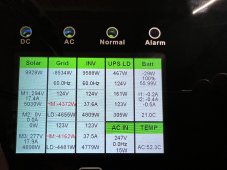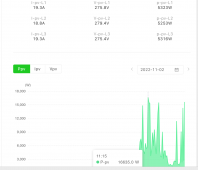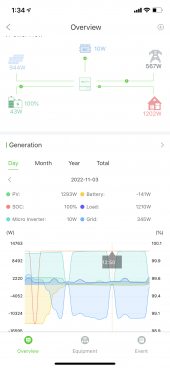I feel like I agree. Mainly at this point just the amount of time I’ve spent. It’s kind of like, an easy thing is just let’s swap it out and see if the problem is corrected. We certainly won’t be in a worse place. ?
Hi,
Glad we are all on the same page here. Please don’t misunderstand me either because I read back what I wrote and it seems insensitive.
I’ll just say I love Sol-Ark. it’s an amazing product. Sol-Ark is years ahead of everyone else
and I don’t see that changing any time soon.
I also love Victron, but it apples to oranges.
I’m in a tight spot because I convinced a customer to stretch their budget to go with the
15k. On paper it fit their needs perfectly. 44
SunPower panels at 435. I would have spec’d
It out for two 12ks, but that was way over budget. Now they just want it out. Keep in mind
it was an existing 19.2k grid-tied system that has
been operating flawlessly for months. Now not
only is it not operating as designed but while it
loses production her electric bill is going up.
If I can’t find a remedy soon I’ll be forced to
remove the 15k and battery bank to restore her
SunPower system as it was. Never mind my financial loss, it’s hard to have referrals and any
credibility to her after falling short with no solution. I expected a few bumps with this but
I was up front about anything before the install
began. A few minor concerns have turned this
into an ugly mess with me now communicating
with her attorney. I’ll do whatever it t takes to make it right, that’s how I work, but this one is
really going to sting, no matter the outcome.
I’ve already offered to replace it with 2-12k’s but
they are interested. (I’m covering any additional
costs out of my own pocket)
Anyway, rant over, hopefully SolArk has some
good news for me tomorrow. An exchange unit seems like a good start, if it’s not just a software issue.There are a ton more boring details but I think you heard enough. I’m tired of them asking for the firmware for the Enphase micros. You
aren’t going to convince me they are causing this, not when the inverter is rated for straight
Grid tie without any battery.









